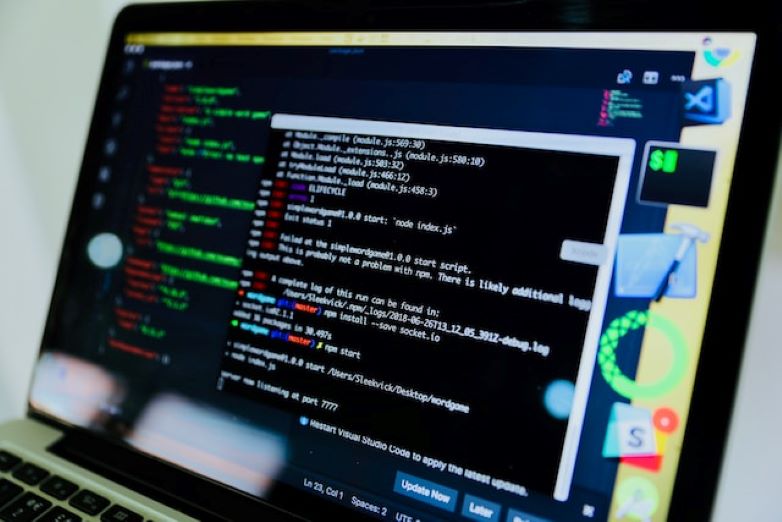How to Start Protecting Your Software IP
In today’s rapidly evolving technological landscape, the creation and protection of Intellectual Property (IP) has taken centre stage. Among the various forms of intellectual property, software IP stands out as a cornerstone of the digital economy. This article aims to shed light on the concept of software intellectual property, its various classifications, and the strategies available to safeguard it.
What is Software IP?
At its core, software Intellectual Property (IP) encompasses computer code or programs that are legally safeguarded from unauthorised use or theft. In a world driven by digital innovation, where software solutions power everything from communication to commerce, protecting the intellectual property inherent in these codes has become essential.
The ownership of software IP typically resides with the company that developed the software or acquired the rights to it. This ownership grants the entity exclusive rights to utilise, reproduce, distribute, and license the software according to their terms and conditions.
What Kind of Intellectual Property Does Software Fall Under?
Intellectual property is a broad term that encompasses various intangible creations of the mind. Software, being a product of human ingenuity, falls squarely within the realm of intellectual property. Four primary categories of intellectual property exist, each with its own unique purpose and legal protection.
The 4 Main Types of Intellectual Property
Patents
Patents give inventors the exclusive rights to their creations. They empower them to control how their inventions are used, produced, and sold for a defined period, usually around 20 years. Patents serve as both an incentive for innovation and a safeguard for inventors’ investments in research and development.
In the realm of software, patents take on a unique dimension. While software itself is intangible, the functionalities and processes it embodies can be patentable. Software patents typically cover novel and non-obvious solutions to technical problems, such as innovative algorithms, data processing techniques, or complex interaction methods. These patents extend protection to the underlying technical aspects that drive a software’s distinctive functionalities.
Copyright
Copyright safeguards the expression of an idea rather than the idea itself. In the realm of software, copyright ensures that the specific code and arrangement of the program are protected. This means that others cannot directly copy or reproduce the code without authorisation. Additionally, user interface elements of software can also be protected under copyright law.
A notable feature of copyright law is that it automatically grants protection to original works without requiring formal registration. This holds true for software code as well. When employees within a company create unique software code as part of their roles, the code is automatically protected by copyright. This protection extends to in-house development, reinforcing the importance of clear IP ownership policies within organisations.
Trade Secrets
Unlike patents or copyrights, which require disclosure of information to gain legal protection, trade secrets involve keeping valuable information hidden from competitors. In the software domain, trade secrets can be a potent tool for safeguarding proprietary elements that provide a competitive edge.
Trade secrets encompass a wide range of confidential information, including processes, formulas, methods, techniques, or any data that isn’t generally known and offers a competitive advantage. In the context of software, trade secrets can include intricate algorithms, optimised code sequences, unique methodologies, and data processing techniques that contribute to your software’s distinctiveness.
Trademarks
Trademark registration offers legal protection against unauthorised use of your branding elements. It prevents competitors from creating confusion in the marketplace and capitalising on your software’s reputation. A strong trademark establishes your software’s authenticity and fosters consumer trust, as users recognise the mark as a symbol of quality and reliability.
While the underlying software code can be protected by copyright, trademark protection extends to the overall look and feel of the software. This is especially important in cases where software interfaces become a key part of the user experience. Trademarks defend against imitation of your software’s visual identity, safeguarding your unique branding and user interface design.

How to Protect Software IP
Protecting software IP demands a multi-faceted approach that involves legal, technical, and strategic measures. Below are strategies that can help ensure the security of your software intellectual property.
Legal Assistance
In the complex landscape of intellectual property law, enlisting the services of a knowledgeable legal team is not just advisable; it’s a strategic imperative. Intellectual property law is a nuanced field that demands a deep understanding of legal precedents, jurisdiction-specific regulations, and evolving technological trends. A proficient legal team well-versed in intellectual property can offer a range of critical services:
IP Portfolio Assessment: An experienced legal team can conduct a thorough assessment of your software’s intellectual property assets. They can help you identify elements that are eligible for patent protection, copyright, or other forms of IP.
Custom Protection Strategies: Your software is unique, and cookie-cutter strategies won’t suffice. A skilled legal team can tailor protection strategies that align with your software’s characteristics, ensuring that you’re securing what truly matters.
Navigating International Waters: Intellectual property laws can vary widely from country to country. If you’re dealing with a global software user base or development team, legal experts can guide you through the intricacies of international IP protection.
Contractual Safeguards: Your legal team can assist in drafting robust contracts and agreements that define the terms of software usage, licensing, and distribution. These agreements play a pivotal role in ensuring that your software’s IP is well-protected.
Patents and Trademarks
For software with innovative functionalities that provide a competitive edge, seeking patent protection is a strategic move. While the eligibility of software for patent protection can vary, certain software elements, such as novel algorithms or unique processes, might meet the criteria. Engaging with patent professionals can provide substantial benefits:
Identifying Patentable Elements: Patent experts can evaluate your software to identify patentable elements. They have the expertise to discern what features can qualify for patent protection and how to draft patent applications that effectively protect those features.
Navigating Complex Processes: The process of applying for a patent can be complex, involving detailed documentation and adherence to specific legal requirements. Patent professionals are well-versed in these processes, ensuring that your application has the best chance of approval.
Trademark Registration: Beyond the functional aspects of software, branding also holds significance. Registering trademarks for your software’s name, logo, or other distinctive features can prevent unauthorised usage and bolster your software’s identity.
NDA for Staff
As software development often involves collaborative efforts, protecting your proprietary information within your team is vital. Non-disclosure agreements (NDAs) play a crucial role in securing this confidentiality:
Customised Agreements: Legal professionals can draft NDAs tailored to your software’s unique aspects, clearly outlining what constitutes proprietary information and the obligations of your employees or contractors.
Legal Recourse: In the unfortunate event of a breach, having a well-crafted NDA can provide you with legal recourse. A legal team can assist in enforcing the terms of the agreement, safeguarding your software’s confidentiality.
Data Security
As the digital realm becomes more interconnected, the need for robust data security measures intensifies. Protecting your software’s source code and sensitive information is paramount:
Comprehensive Security Strategies: Legal experts can guide you in implementing comprehensive data security strategies that encompass encryption, access controls, and regular security audits. These measures can thwart unauthorised access attempts and data breaches.
Regulatory Compliance: Data security doesn’t just protect your software; it also ensures compliance with evolving data protection regulations. Legal professionals can help you navigate data protection laws and avoid potential legal pitfalls.
Mitigating Risks: Should a security breach occur, a legal team experienced in technology-related breaches can help mitigate legal risks and manage any legal proceedings that might arise.
Licensing Management
Licensing is a crucial aspect of software IP protection, as it determines how authorised users can legally utilise your software. However, due to the intangible nature of software, protecting it through licensing requires a different approach. This is where licensing management systems come into play.
Licensing Management Systems
Licensing management systems serve as a gatekeeper, allowing only authorised users to access and utilise your software. They play a vital role in ensuring that your software is used in accordance with the terms of your software IP agreement. These systems offer various types of licenses that cater to different needs.
Single Use License
A single-use license provides a clear and direct method of granting access to your software. This license is typically tied to a specific device and is non-transferable. It ensures that the software can only be activated and used on the authorised device. Activation codes, often sent via installed or downloaded software, act as the key to unlock the software’s functionality.
Single-use licenses are particularly suited for software that is intended for installation on personal devices. This license model offers a straightforward way to control the number of devices using your software and can prevent unauthorised distribution.
Network or Shared Licenses
For scenarios where multiple users or devices require access to your software within a defined network, network or shared licenses are the solution. These licenses allow installation on multiple devices connected through a network. This model is especially useful for safeguarding online intellectual property and optimising costs for multi-user access.
Network licenses are a cost-effective way to manage software utilisation in a team or organisation. They ensure that your software is accessed within the boundaries of the defined network, preventing unauthorised installations while enabling collaborative work environments.
Single Seat License
The single-seat license model focuses on granting access to a specific user, usually linked to their unique credentials. This license type effectively limits the software’s usage to designated employees or individuals. It’s a strategic approach for ensuring that your software is used by intended personnel only.
Single-seat licenses are particularly relevant for software that is specialised or requires expertise for operation. By restricting access to authorised users, you maintain control over the scope of your software’s usage and the audience it serves.
Hybrid Solutions
Hybrid solutions are an amalgamation of different license types, strategically combined to address diverse client needs. Software vendors often offer various license models to cater to different usage scenarios, ensuring that their intellectual property is protected while clients’ specific requirements are met.
For example, a hybrid solution could involve offering both single-seat and concurrent licenses. This approach caters to different teams within an organisation. The flexible hybrid model provides clients with options that align with their operational structure and budget constraints.
Conclusion
In an era where digital innovation is transforming industries, safeguarding software intellectual property is paramount. Patents, copyright, trademarks, trade secrets, and licensing management systems collectively provide a comprehensive strategy to protect software IP.
By implementing robust legal measures, leveraging appropriate forms of IP protection, and deploying effective licensing management systems, companies can ensure that their innovative software remains secure. This not only preserves the fruits of their labour but also opens up avenues for generating revenue through legal software utilisation.
As the digital landscape continues to evolve, proactive protection of software IP will be a cornerstone of sustainable growth and innovation.
Minesoft: Empowering Your Software IP Strategy
In a competitive landscape it is more important than ever to stand out from the crowd. Minesoft’s suite of patent intelligence solutions can bolster your IP strategies, making the process of protecting your software IP easier and faster. PatBase enables you to speed up your patent research process, allowing you to accurately perform patent searches and analysis to spot areas for potential development. In fast-paced environments is key to always stay on top of legal status changes to patent applications, documents and families, and Minesoft Trackers help you do just that. Learn how Minesoft’s suite of patent intelligence solutions can help you can fortify your software’s future and request a demo today.

